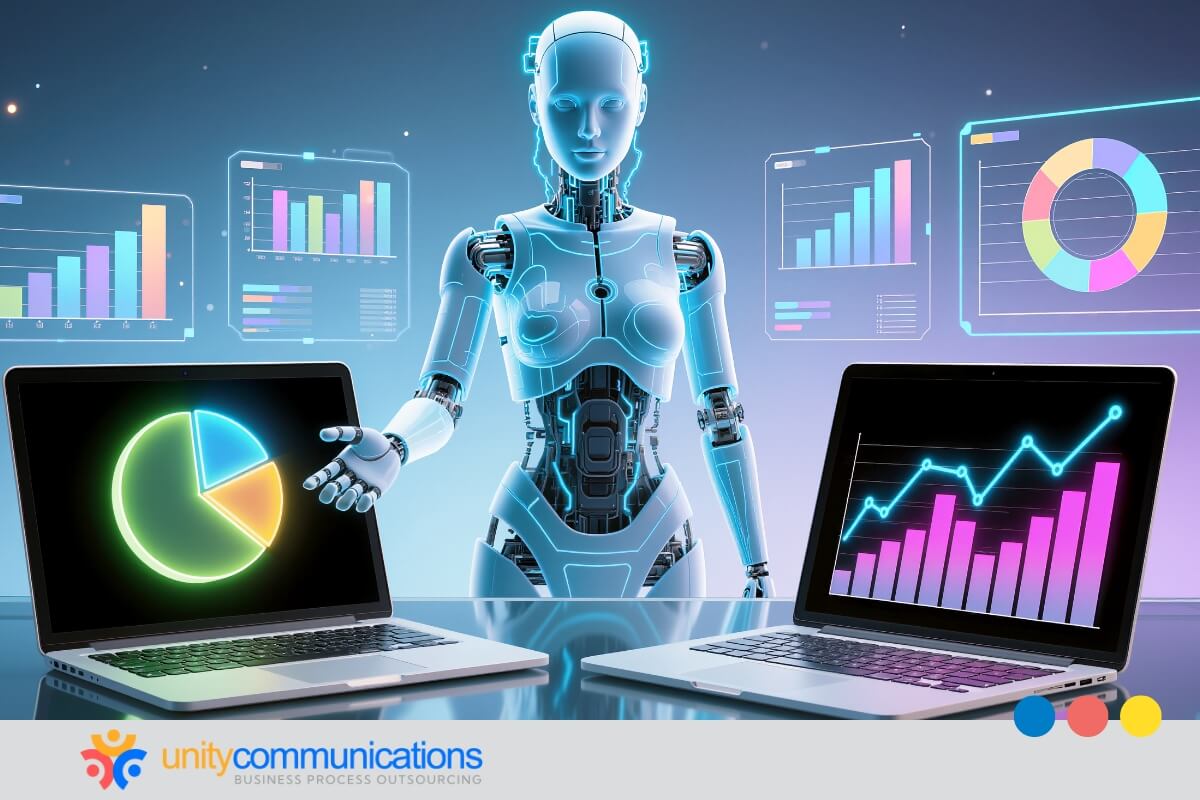Table of Contents
Building an effective artificial intelligence (AI) agent takes more than connecting to a single model. Enterprise teams need robust development tools to design, orchestrate, and scale agents that can reason, execute tasks, and collaborate across workflows.
Which applications deliver measurable returns? The ecosystem offers hundreds of solutions, from enterprise platforms to open-source frameworks. The key is learning how these tools fit together to accelerate business value.
In this guide, you’ll discover the criteria for choosing the right platforms and strategies to balance no-code speed with developer-first flexibility.
8 best AI agent development tools

The AI software market size is projected to reach $467 billion by 2030. This rapid expansion underscores the importance of implementing scalable, secure, and adaptable AI tools to manage the increasing demands for data, users, and regulations without compromising performance or safety.
Choosing a platform is about alignment, matching its strengths to your company’s immediate and long-term needs. Focus on these three criteria:
- Scalability and performance. A tool that works for 100 users should also perform for 10,000. The right AI agent development tools allow you to expand seamlessly without compromising performance.
- Integration architecture. Your agents must connect with application programming interfaces (APIs), databases, and workflows you already rely on. Without strong integration, your AI becomes an isolated pilot rather than a core business driver.
- Empowerment. Some teams need drag-and-drop simplicity, while others demand advanced customization. The best tools support both.
The takeaway is clear: pick AI agent development platforms that support experimentation now and enterprise-grade execution later.
The following sections examine today’s most impactful platforms across these criteria. By understanding their roles, you can decide which belong in your toolkit now and which to explore as your needs evolve.
1. Google Agent Builder and Development Kit
Google approaches AI agent development with both non-technical users and engineers in mind. Google Agent Builder is a no-code platform that enables teams to quickly set up conversational agents. It’s perfect for customer support, FAQ automation, or prototyping without heavy coding.
On the other hand, the Google Agent Development Kit is for developers. It features deeper customization, orchestration across systems, and support for multi-agent applications.
You can combine these two tools, starting with Agent Builder for quick wins and then advancing to the Development Kit for enterprise-scale workflows. This dual approach means you don’t have to choose between speed and sophistication, as you can grow into both.
2. OpenAI’s new tools for building AI agents
OpenAI has moved far beyond being “just a chatbot provider.” Its latest AI agent development tools help build agents that answer questions and take actions, integrate with systems, and learn over time. They serve as the building blocks for creating intelligent agents that can operate across departments and workflows.
Key features include:
- Function calling enables agents to trigger APIs or functions, converting requests into actions.
- Retrieval-augmented generation (RAG) retrieves data from external sources to provide more accurate, contextual answers.
- Assistants API is the orchestration layer that provides memory, tool usage, and thread management for multi-step workflows.
- Code Interpreter / ADA runs calculations, analyzes spreadsheets, and generates reports.
- Memory lets agents retain context across sessions.
- Multi-modal input/output supports text, images, and audio, expanding agents’ use cases.
Together, these tools mean OpenAI agents can:
- Automate workflows, including approvals or record updates.
- Analyze and decide using real-time data and calculations.
- Personalize interactions with customer or employee information.
- Scale operations to handle thousands of requests consistently.
For example, a finance agent could analyze invoices, route them for approval, check them against contracts, and record them in accounting software. A customer support agent could process refunds and update customer relationship management (CRM) records while answering client questions.
3. Anthropic and Claude integration tools
Anthropic’s Claude is an AI agent development tool that differentiates itself through a safety-first architecture. This makes it the preferred platform for healthcare, financial services, government, and other compliance-intensive sectors, where AI errors carry regulatory and reputational consequences.
This balance is critical for regulated industries. Respondents to the AI at Work 2025 report placed data privacy and security risks as their top two concerns, ranking highest in severity (the most significant risk) and frequency (cited most often). Claude directly addresses these barriers by offering tools that prioritize reliability and transparency.
The benefits of Claude include:
- Responsible reasoning. Agents can analyze financial reports, medical records, or policy documents with reduced risk of non-compliant outputs.
- Guardrails for safety. Constitutional AI enforces constraints that align with industry standards, such as the Healthcare Insurance Portability and Accountability Act of 1996 (HIPAA) and the General Data Protection Regulation (GDPR).
- Enterprise trust. Customers are more likely to adopt AI-driven services when companies demonstrate strong safety and governance. Claude’s design helps businesses deliver on that trust.
- Long-term viability. By prioritizing safety, Claude agents reduce the risk of regulatory pushback or expensive retrofits later, a common pain point in AI adoption.
Regulated organizations consider Claude-powered agents for mission-critical use cases such as:
- Healthcare agents that summarize patient data while complying with HIPAA
- Finance agents that generate audit-ready reports without exposing sensitive information
- Legal and compliance agents that review contracts with built-in safeguards
To innovate responsibly, Anthropic’s Claude integration tools provide a strong, future-proof foundation for AI agent development.
4. CrewAI and orchestration frameworks
Building collaborative agents is transformative. This is where CrewAI comes in. It is designed for orchestration. You can assign each agent roles, such as research, analysis, or outreach, and ensure they coordinate toward a shared goal.
This approach mirrors human teamwork. Instead of one agent juggling everything, CrewAI enables specialization. When connected through AI agent APIs, agents can share context, pass tasks, and trigger each other’s workflows.
For example, in a sales process, CrewAI can orchestrate:
- A lead qualification agent that scores prospects
- An analytics agent that forecasts conversion rates
- A communications agent that drafts outreach emails and updates the CRM
- A reporting agent that pushes insights to dashboards via APIs
For growing companies, CrewAI and similar frameworks serve as the glue that unites multiple agents into a single, intelligent workforce. They can scale setups from simple use cases to multi-agent ecosystems that drive measurable business outcomes.
5. LangChain for multi-agent workflows
LangChain has quickly become one of the most talked-about AI agent development tools, and for good reason. Its strength lies in connecting models, APIs, and databases into dynamic pipelines that go far beyond one-off use cases.
Instead of building a single chatbot, you can use LangChain to design entire intelligent ecosystems where multiple agents interact, exchange data, and execute actions in real time. With LangChain, teams can build:
- Research agents that search across knowledge bases and summarize findings
- Customer support agents that retrieve client data from CRMs and resolve tickets using APIs
- Data analysis agents that question databases, process results, and generate automated reports
- Multi-agent teams where specialized agents collaborate, such as one for data collection, another for analysis, and a third for client communication
This flexibility makes LangChain a developer-first choice. Startups can use it to prototype quickly, while enterprises can extend it to orchestrate complex, production-ready workflows that scale.
If you can imagine the workflow, you can likely build it with LangChain. By leveraging AI agent APIs, you can develop a framework that transforms disparate models into coordinated systems, enabling intelligence to drive action at scale.
6. Hugging Face and model integration resources
When it comes to openness, Hugging Face stands out. It offers over 500,000 pre-trained models that can be integrated into AI agents, from translation to sentiment analysis to summarization. With 15,000+ organizations and 100,000 developers contributing, it has become one of the most active AI communities.
Its most significant strength is flexibility. You’re not locked into one model or vendor. Instead, you can test, swap, and improve as your needs change. This is important since 76% of developers are already using or planning to use AI tools in 2024, and Hugging Face provides a natural entry point with easy-to-adopt integrations.
For businesses, this openness means faster innovation without vendor lock-in. Whether plugging in a domain-specific model or using Hugging Face’s Inference API, you can build tailored AI agents while staying agile in a rapidly evolving tech landscape.
7. Marketermilk’s reviewed platforms for developers
Choosing among dozens of AI agent development tools can feel overwhelming. Known for its structured reviews, Marketermilk breaks down platforms, highlighting strengths, weaknesses, and best-fit scenarios.
For decision-makers, these reviews save weeks of testing. They provide insight into usability, scalability, and real-world performance, allowing you to make an informed decision before committing. This is especially valuable in business process outsourcing (BPO), where companies rely on AI to streamline client services, automate workflows, and deliver consistent results.
By leveraging Marketermilk’s research, you can make more informed investments in AI agent development tools and align them with your objectives. Instead of getting distracted by hype, you can choose based on your need for internal efficiency and the client experience.
8. Reddit community-recommended AI agent tools
Nothing beats hearing from developers. Reddit communities such as r/AI_Agents have become valuable spaces for sharing lessons learned. You’ll find candid discussions about which tools perform under pressure, which fail in production, and clever workarounds for common issues.
For example, developers frequently highlight:
- AutoGPT and BabyAGI: Experimental open-source projects that inspired much of the multi-agent movement
- AgentGPT: A browser-based interface that lets users spin up and test agents quickly without coding
- Haystack: An open-source framework for retrieval-augmented generation (RAG) pipelines
- LlamaIndex (formerly GPT Index): A toolkit for connecting large-language models (LLMs) to private or enterprise data
- Flowise: A no-code/low-code tool for building and deploying agent workflows visually
Instead of paying the price of trial and error, you can learn from those who have already. Reddit’s community insights make it one of the most underrated yet powerful resources for AI agent development, especially for teams looking to validate tools before making enterprise commitments.
Balancing no-code vs. developer-first tooling

Effective AI agent implementation requires both rapid experimentation and production-grade reliability. You can achieve optimal results by deploying no-code and developer-first tools in complementary roles rather than competing alternatives.
- No-code platforms expedite the process. You can create prototypes and deploy simple agents without waiting on engineering bandwidth. This empowers your business to experiment and validate ideas quickly.
- Developer-first frameworks give control. Engineers can design custom integrations, optimize workflows, and scale agents. This approach supports complex, mission-critical applications that require reliability and fine-tuning.
As an innovative organization, you can view them as complements. For example, you can start with no-code tools for rapid experimentation. Once an idea proves valuable, hand it to developers to scale using robust frameworks.
This approach mirrors how outsourcing works. You can leverage external teams for immediate execution, while in-house teams handle core processes, optimizing them for long-term growth.
If you can successfully combine the no-code speed with the developer-first control, you will have an AI toolkit that grows with you.
The bottom line
The best AI agent development tools are not just about features but about fit. Google and OpenAI offer strong ecosystems. Anthropic ensures safe integration. CrewAI and LangChain orchestrate complex workflows. Hugging Face opens the door to community-driven innovation. Marketermilk and Reddit provide practical insights from real users.
Don’t just chase shiny new platforms if you want to stay ahead. Build a toolkit that balances speed, control, and scalability. When you select the right platforms, you can lay the foundation for successful and intelligent operations.
If you want to learn more, let’s connect.




